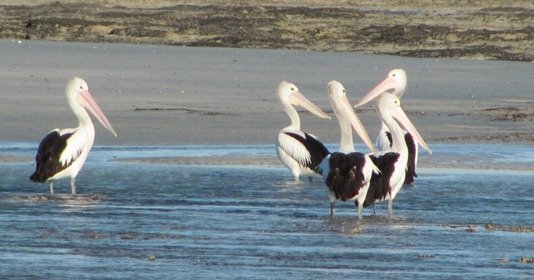
Broome has huge tides and it is very hard to explain or for someone to understand the extremes unless they have experienced it for themselves. With a tidal movement of up to 10 metres (over 32 feet) in height there is a tremendous amount of water coming and going during these tides. Areas of reef that would otherwise remain covered will become exposed and the birds will anticipate the chance of feeding in areas that are beyond reach at lower tides. If you sit and wait for the tide to drop you actually hear the silence broken as the water rushes back over the reef and the birds immediately take flight to reach the upcoming exposed areas. They are aware that they can land in shallow water and before long they will be on exposed reef. It is on these occasions that we take the opportunity to explore the reef in dive boots. The small compact bivalves cover the reef and as you walk across the reef you discover there are pools left behind full of all sorts of creatures. When you consider that everything on the reef has to survive these extreme tidal movements and the storm surges during our cyclone season it is even more remarkable that the coast off Broome has so much to offer beyond the bird life.
Exposed reef
As we are already into May we have seen most of our migratory shorebirds head north, but there are still a few that are going to be heading off in the next fortnight and they are feeding up for their journey. The Ruddy Turnstones will migrate, but the Pied Oystercatchers will remain in Broome all year. This pair below normally lay their first eggs in July each year.
Pair of Ruddy Turnstones exploring as the tide recedes
Pair of Pied Oystercatchers feeding at low tide
As you walk out on the reef you soon discover a huge variety of creatures and several pools are the perfect environment for clams.
Six large clams
The most common sea shell present is the Cowrie and there are numerous sizes and colours across the reef. They appear to either be absent or present, but it is not obvious why certain areas are preferred to others.
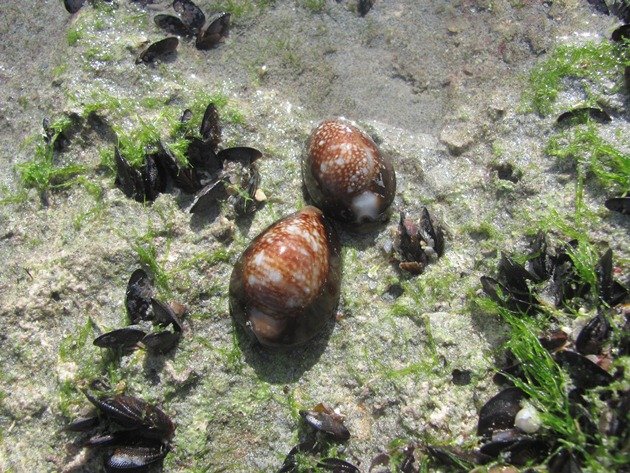
Cowrie shells on the reef
Star fish are fairly common in the pools and they vary in colour from bright orange to a more patterned variety as seen below.
There are a variety of Sea Cucumbers and Feather Stars that brighten up the edges of all of the pools.
Feather Stars and Sea Cucumber
A rather odd creature, the Sea Hare, is either absent or abundant. They are well disguised, but they emit a bright purple ink if they feel threatened and soon turn the water an inky purple colour.
Sea Hare
We are not exactly sure what this creature is, but possibly an anemone. It moves freely across the sand and through the water most likely feeding as it goes.
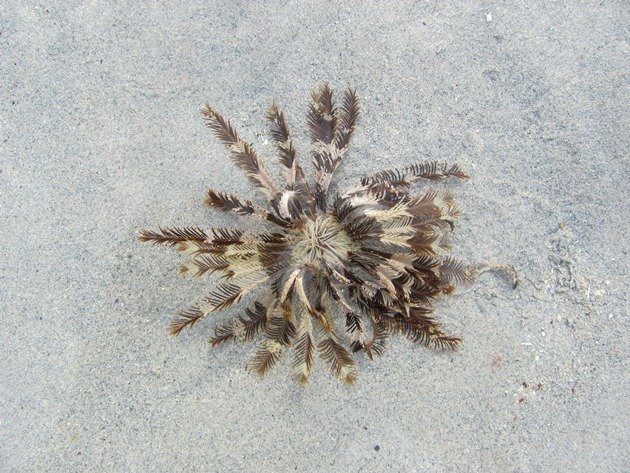
Possible anemone
Tube worms of varying shape and colour line the edges of the pools and open and close as you pass by.
Tube worms
Every pool offers different creatures and no doubt some are eaten by the variety of shorebirds that reside at the location and the ability to enjoy exploring on foot is a pleasure in itself. The tide chart does need to be observed firstly, because once the tide turns this reef goes under very fast. The shorebirds can escape in flight, but you wouldn’t want to be suddenly trapped out here with a tide racing in. The ideal tides are always in the late afternoon and offer the perfect alternative to a walk on a sandy beach, which in itself is a pleasure, but variety is the spice of life!


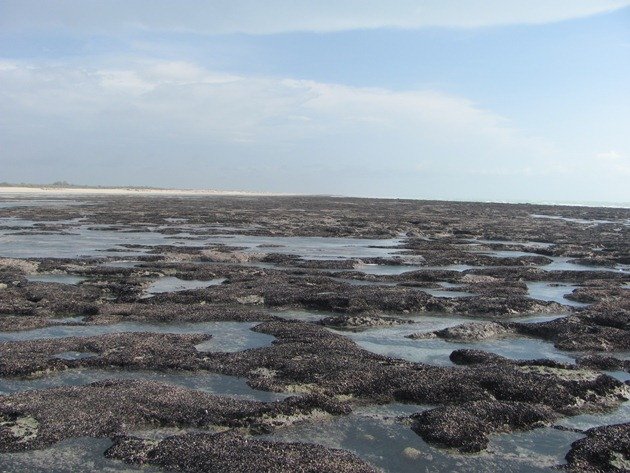
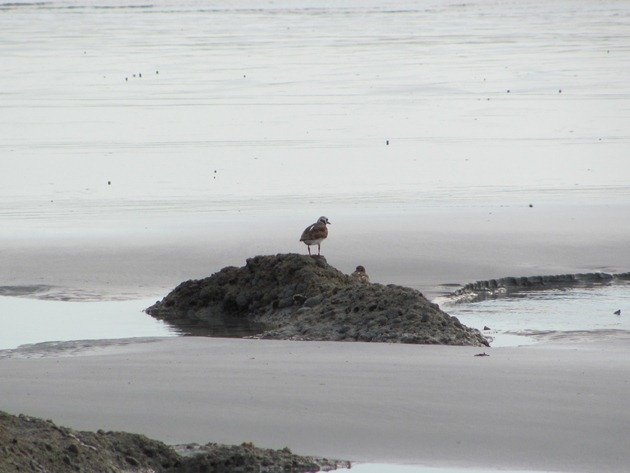
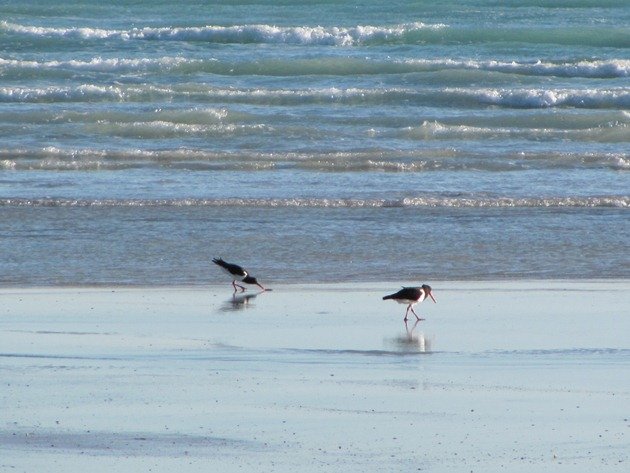
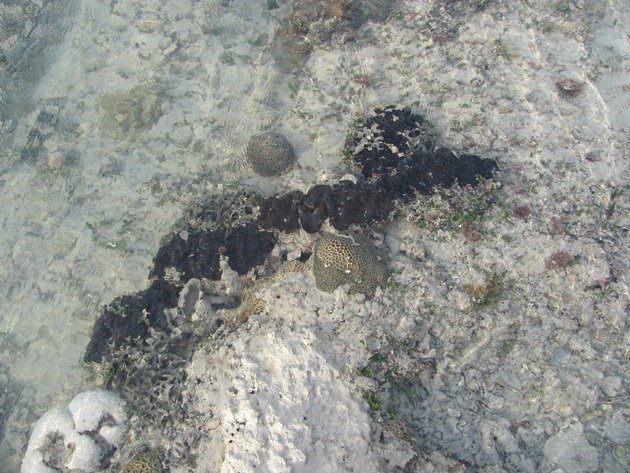
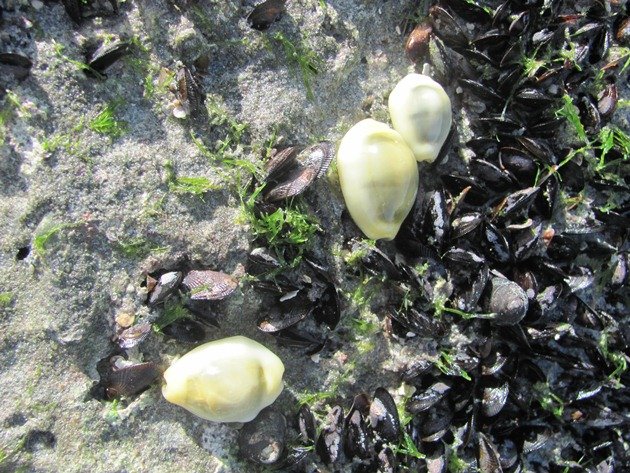
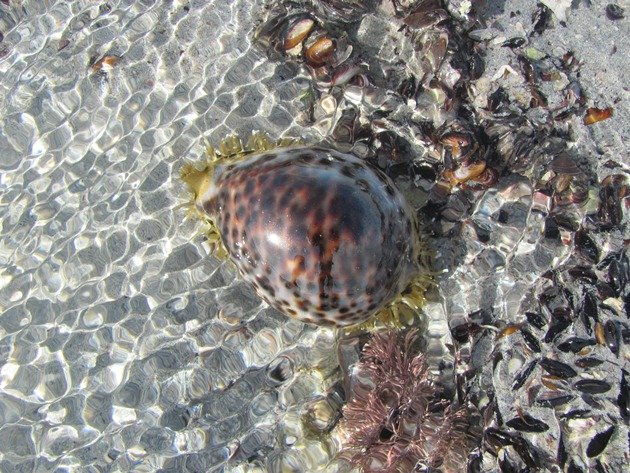
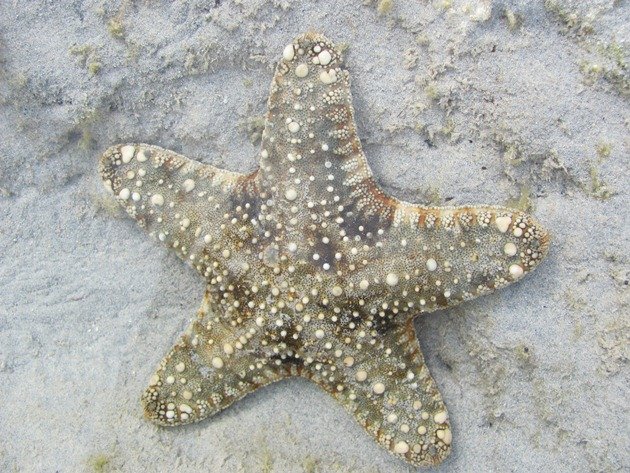
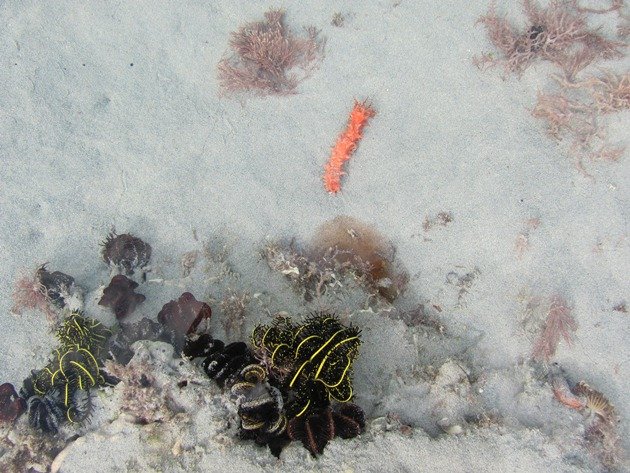
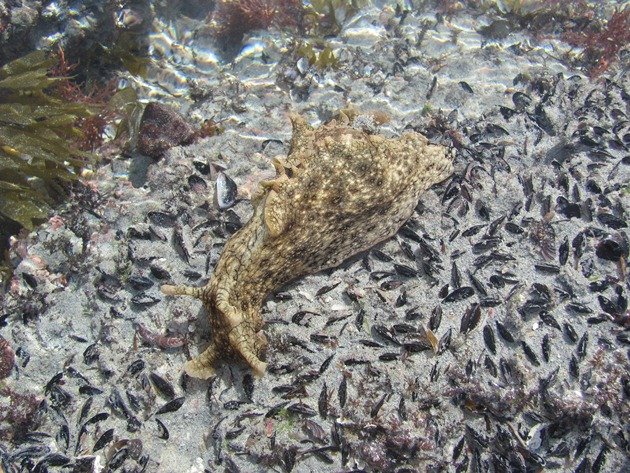
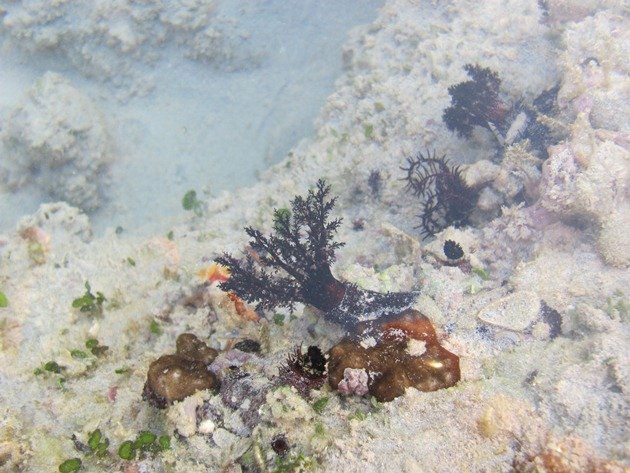











Your possible sea anemone has to be something else, because by definition anemones sessile: they are attached to a substrate, and they do not have a free-floating medusa stage (like jellyfish). The creature looks more like a type of starfish.
It’s wonderful to see reef photos, because when we went to the Great Barrier Reef last year, I got so sea-sick I never wanted to get into the water…
The anemone is a “feather star” or Crinoid – a class of Echinoderm (starfish).
Sorry to hear you got sea sick. Actually it can be better to get in & be at one with the water and then you don’t feel as bad. Alternatively you explore the Ningaloo reef near Exmouth in Western Australia and you can get to it without using a boat! You just walk in off the beach….perfect! 🙂
Thanks, Jeremy, we wondered if it was a Feather Star, but we mainly see the black and yellow ones and the red and black ones attached to the sides of the pools. There are also Brittle Stars in the mud. We never touch anything in case it is dangerous! 🙂
I loved this post, seeing a few creatures similar to ours here on the Olympic Peninsula, and others completely different. Great photos, too!
Thanks, Wendy! We love our low tides here in Broome.